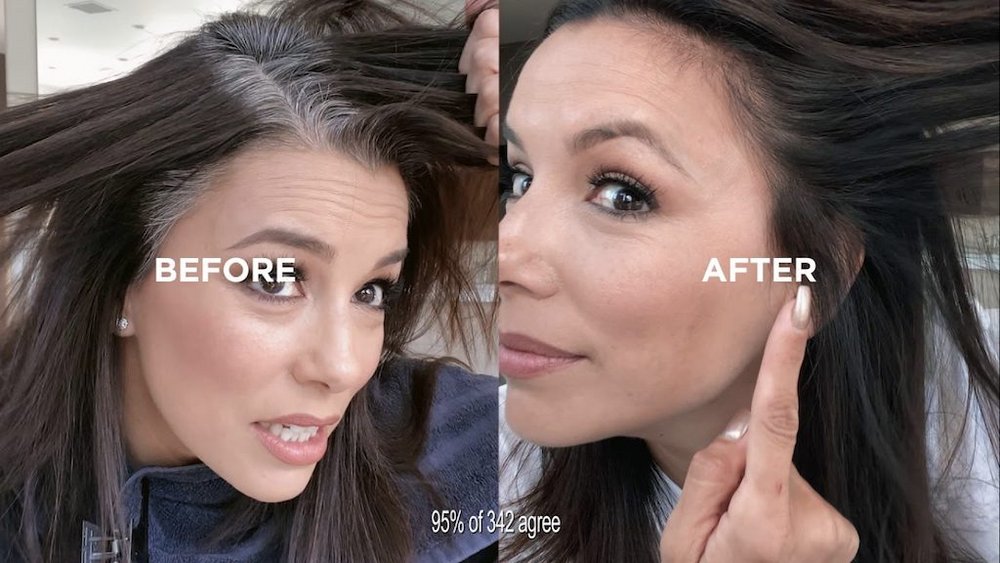Promoted content
Smashing Stereotypes: Advertising to the over-50s /
In the first of our five-part series on smashing stereotypes, we looked at the over-50s – a group that is often either ignored or misrepresented by advertising despite its spending power and influence
Phoebe O’Connell
/
Mike White, CEO and founding partner of global live marketing agency Lively joined us to debunk some myths about the over-50s.
But first Contagious strategist Becca Peel ran through some old-people stereotypes, including ‘they all love cruises’, ‘they only read the Daily Mail’ and ‘they’re shit with technology’. All pretty damaging, she said, adding that she was here to flip this on its head ‘and shut down “OK Boomer”.’
Since 79% of over-50s don’t believe they are accurately portrayed in advertising, Peel shared some examples of great creative campaigns that cut through the stereotypes. One ‘taboo-busting powerhouse’ is Bodyform, whose latest campaign, Womb Stories (by AMV BBDO in London), ‘shows women in all walks of life’. The brand shifted its targeting to become more inclusive as its understanding of its audience has evolved, she explained.
Other stereotype-shattering examples included the award-winning partnership between L’Oréal and Vogue on The Non-Issue, which tackled female age discrimination, Citroën’s partnership with now 98-year-old influencer Iris Apfel, and Eva Longoria dyeing her greys at home with L’Oréal.
Becca Peel, Contagious

So what do modern over-50s actually look like? Well, they’re not ‘old’ for a start. ‘Middle age is an active and social time of life,’ said Peel. Research from Tui last year found that they go to gigs every few months, have a gym membership, watch YouTube videos, and have sex. Brands that fail to see that miss out on a lucrative market. ‘There is a massive opportunity for change here.’
Lively’s White, as a gym-going father in his early fifties, felt more than qualified to weigh in on the subject and do his bit to ‘flip, defraud and debunk a load of myths’ around this topic. White is head of vision and strategy at Lively, which exists to create live marketing campaigns through integrated physical and digital experiences. ‘Our figures and dwell time already compete with traditional advertising, and we all know that’s on its knees,’ he said.
For White, the pandemic has only highlighted how valuable digital mobilisation could be – and tech take-up among the over-50s (who make up a third of the UK population and account for two thirds of the country’s wealth) has increased, with tools like Zoom becoming lifelines for business, relationships and entertainment. Hardly a niche audience, in the US this demographic, it is estimated, will spend some $84bn over the next decade. By 2050, the number of people over 60 is set to double globally.
Mike White, Lively

White introduced some older influencers: 53-year-old wellness influencer Angelique Miles, surfer and model Francisco Cipriano, and Shaun Robertson, founder of the Chic Over 50 blog. ‘These guys aren’t niche,’ said White. They’re experience seekers. ‘Brands seem to have forgotten that we created the summer of love and the raves in the 90s. [...] We’ve got an invigorated spending power and we’re reshaping industries all over the world.’
Boomers’ minds are wired differently too, explained White. While to millennials, experiences represent ‘a feather in the cap’ that can be shared on social media, boomers’ desire for experience stems from changes in their brain chemistry, he added.
‘When we hit 50, our brain begins to switch from materialistic relationships with the world, where one consumes experiences like a product, to a view where one desires experiences for personal benefit.’ To take advantage of this, brands should get creative with positioning their products as rich and meaningful life experiences, advised White.

To engage this group, keep in mind that the top four areas of interest are travel, music, entertainment and beauty. To illustrate the point, White reminded the audience that at last year’s Glastonbury festival, the average age of attendees was 39 and 31% were over 50.
He ran through some pitfalls to avoid, like assuming there is a watershed once 50 hits. Instead of bombarding this diverse and life-loving group with ads for funeral care, anti-ageing creams and erectile dysfunction medicine, this view of ‘about to die’ needs to go, said White.
So who is getting it right? John Lewis recognised the technical capabilities of its over-50s shoppers last month with the launch of a virtual personal shopping experience, while Amex’s Platinum House activation at Coachella was tailored to its older, Platinum card-holding customers. Finally, Nike’s 2016 Unlimited campaign challenged perceptions that ‘old people are boring’ by championing a running, cycling, swimming, Iron Man-completing 86-year-old nun.
White’s takeaways to conclude his session were:
- Identify and create passion points: find out what really matters to your audience- Associate with ambassadors (there are plenty out there!)
- Build a storyline – this generation can’t be anything but creative and exploratory
- Use all of this as a springboard for developing experiences older people can access with your brand. Because of all the generations, the Baby Boomers respond best to experiences
In summary, successful brands will target by attitude rather than age, add experiential to their marketing, and swap stereotypes for science.
If you’d like to talk to Mike about how brands can create experiences that work for consumers over 50, you can reach him at [email protected]. You can also view the full OK Boomer webinar for free here.
Want more of the same? /
We don’t just write about best-in-class campaigns, interviews and trends. Our Members also receive access to briefings, online training, webinars, live events and much more.




